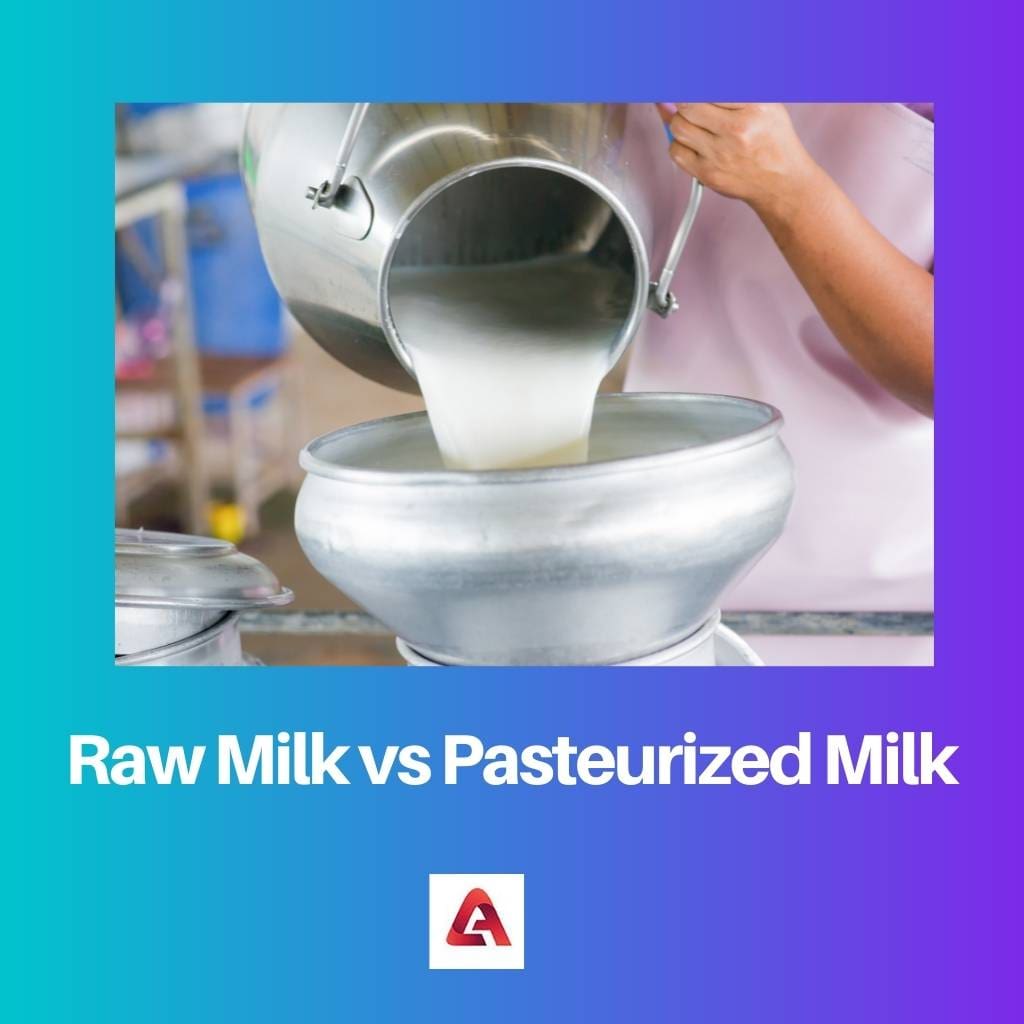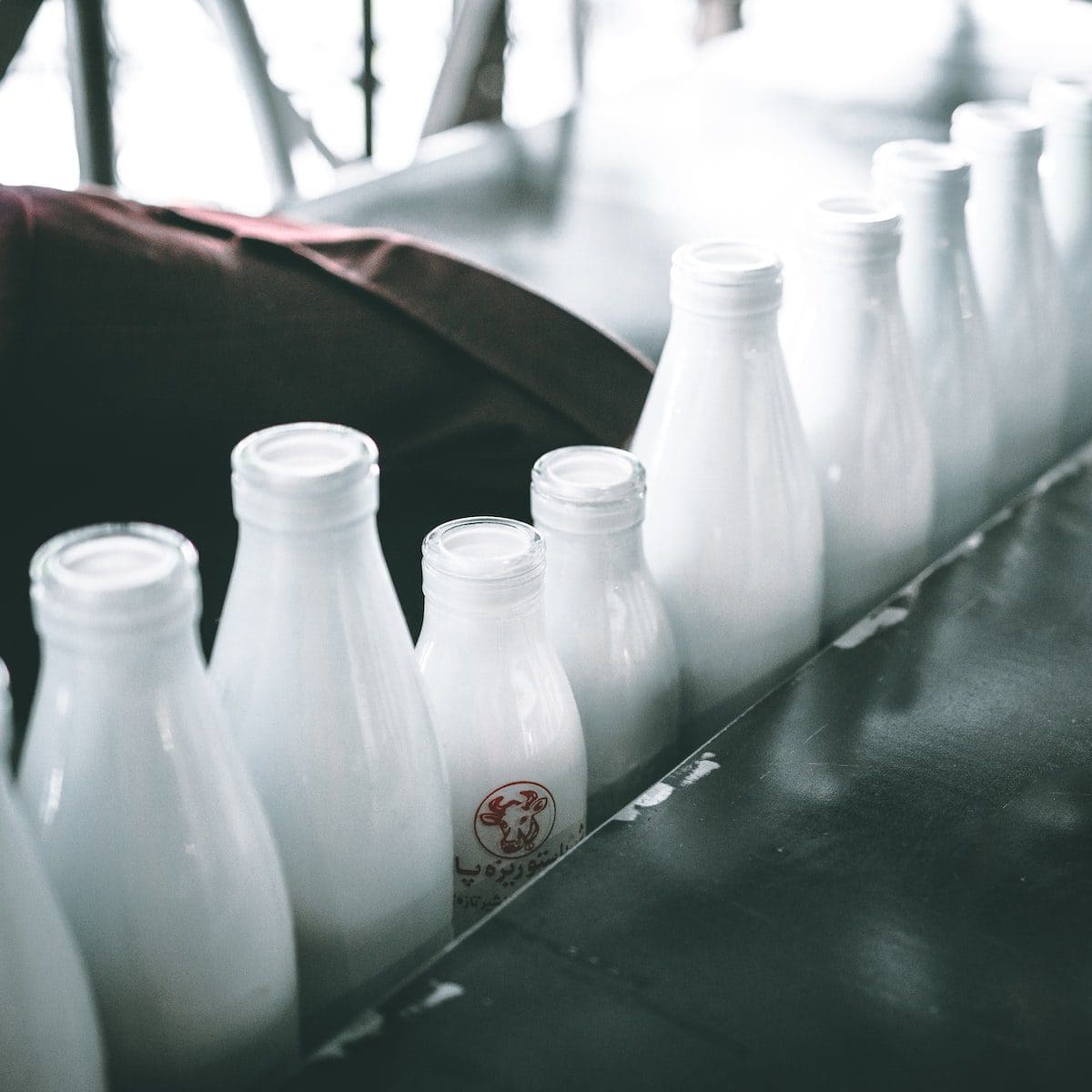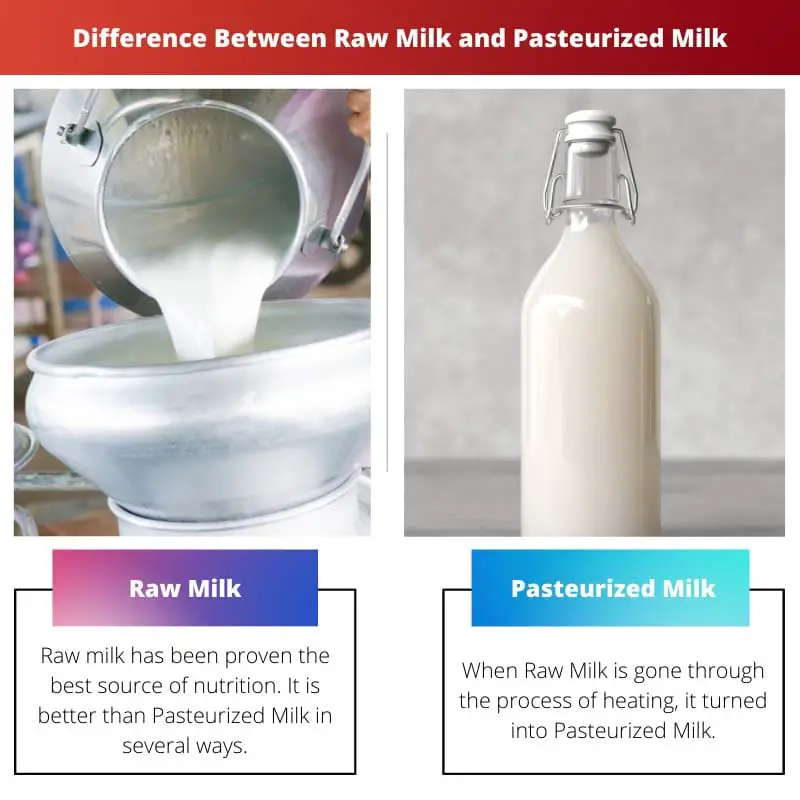Milk is very important for the all-round physical and mental development of the body. It has several nutrients in it. It is taken at breakfast and after dinner also.
For example, cow milk, goat milk, almond milk, coconut milk, and many more. Except these also, there are types of milk that include raw milk and Pasteurized milk.
Key Takeaways
- Raw milk is untreated. Pasteurized milk has been heat-treated to kill pathogens.
- Pasteurized milk has a longer shelf life. Raw milk may contain harmful bacteria.
- Raw milk proponents argue for potential health benefits, but medical experts recommend pasteurization for safety.
Raw Milk vs Pasteurized Milk
Raw milk is milk that has not been pasteurized, while pasteurized milk has been heated to a specific temperature to kill any harmful bacteria that may be present. Raw milk is considered to be more natural and nutritious, but it also carries a higher risk of bacterial contamination.

Raw Milk is milk that does not go through the process of heating to kill several bacteria to make it safer for consumption. It is also known as unpasteurized milk.
Pasteurized Milk is when cold raw milk is undergone through a process of heating. It results in terminating harmful bacteria present in the milk that can cause food poisoning or some allergy.
Comparison Table
| Parameters of Comparison | Raw Milk | Pasteurized Milk |
|---|---|---|
| Safety | It is less safe. | It is safer. |
| Shelf life | Shorter shelf life | Longer shelf life |
| Lipase | Contains lipase | Does not contain it. |
| Pathogenic bacteria | Have pathogenic bacteria | Does not have this bacteria |
| Organoleptic or Properties | Properties remain the same | Properties change |
What is Raw Milk?
Raw milk has been proven to be the best source of nutrition. It is better than Pasteurized Milk in several ways and has the following benefits:
- It is full of nutrition as 244grams of raw milk has Calories: 150, Protein: 8 grams, Fat: 8 grams, Calcium: 30% of the RDA, Vitamin A: 6% of the RDA, Iron: 6% of the RDA, Cholesterol: 10% of the RDA, Sugars: 12 grams.
- Excellent source of Raw Protein: we all are aware of the benefits of protein in the body and what can cause a lack of protein.
- Beneficial for bones: as we know, it has all the necessary nutrients that include calcium.
- Helpful in preventing weight gain: it is a useful and great option for preventing the problem of obesity, this has been proven in studies, too, that drinking raw milk prevents obesity in children.
- A versatile product: it is very versatile and can be consumed with several other things.

What is Pasteurized Milk?
When Raw Milk is gone through the process of heating, it turns into Pasteurized Milk. This process was invented around 150 years ago.
The following are the benefits of consuming Pasteurized Milk:
- Less risk of Sickness: consuming raw milk invites several bacteria into the body. Therefore Pasteurized Milk does not cause any direct problems.
- Rich in Nutrients: raw milk only has a few existing nutrients. But Pasteurized Milk can also have added extra nutrients. Therefore, it is healthier.
Except these, Pasteurized Milk can be stored for a longer period than Raw Milk.
Disadvantages of Pasteurized Milk:
- Less naturally occurring nutrients: due to excessive heating, few nutrients that were present in the Raw milk are destroyed, and therefore, when compared, it has less natural nutrients than Raw Milk.
- Added Contaminates: in Pasteurized Milk, sometimes, some extra synthetic products are added.

Main Differences Between Raw Milk and Pasteurized Milk
- Pasteurized Milk is available in different forms, i.e., semi-skimmed and skimmed forms, while Raw Milk is only available in liquid form.
- Raw Milk has some Pathogenic bacteria which are not present in Pasteurized Milk.

- https://academic.oup.com/femsre/article-abstract/37/5/664/541439
- https://www.liebertpub.com/doi/abs/10.1089/fpd.2009.0302
- https://www.sciencedirect.com/science/article/pii/S0958694601001510
- https://www.sciencedirect.com/science/article/pii/S0195666308000822
- https://journals.asm.org/doi/abs/10.1128/aem.51.2.438-440.1986

I appreciate the references section, which provides scientific evidence backing the information presented, adding credibility to the content.
Absolutely, the references make the article academically sound and reliable.
The health benefits and nutritional content of both raw and pasteurized milk are explained thoroughly, giving readers a deeper understanding.
The post effectively conveys the key differences in safety, shelf life, and pathogenic bacteria between raw and pasteurized milk, facilitating an informed decision-making process.
This is a well-rounded article that equips readers with comprehensive knowledge to discern between raw and pasteurized milk, making informed choices for healthier living.
The comparison table is very illustrative and highlights the differences in a clear and concise manner.
Agreed. The benefits and disadvantages section is also enlightening and completes the overall knowledge of both types of milk.
I found the information presented in this post to be highly informative, and the detailed comparison will undoubtedly help readers weigh the pros and cons of each type of milk effectively.
This post led me to have a better understanding of the differences between raw and pasteurized milk and helped me to make a more informed choice.
The article provides a comprehensive understanding of milk and its processed form, pasteurized milk. It puts both types of milk in context, explaining the nutritional differences very well.
Yes, I could not agree more. The post is educative and insightful.
Absolutely, it provides valuable insights into the health benefits and risks associated with raw and pasteurized milk.
The post does an excellent job of shedding light on the versatility and benefits of raw milk, as well as the added nutrients and longer shelf life of pasteurized milk.
The content delves into the academic aspect of milk types, promoting a better understanding and informed consumption choices.